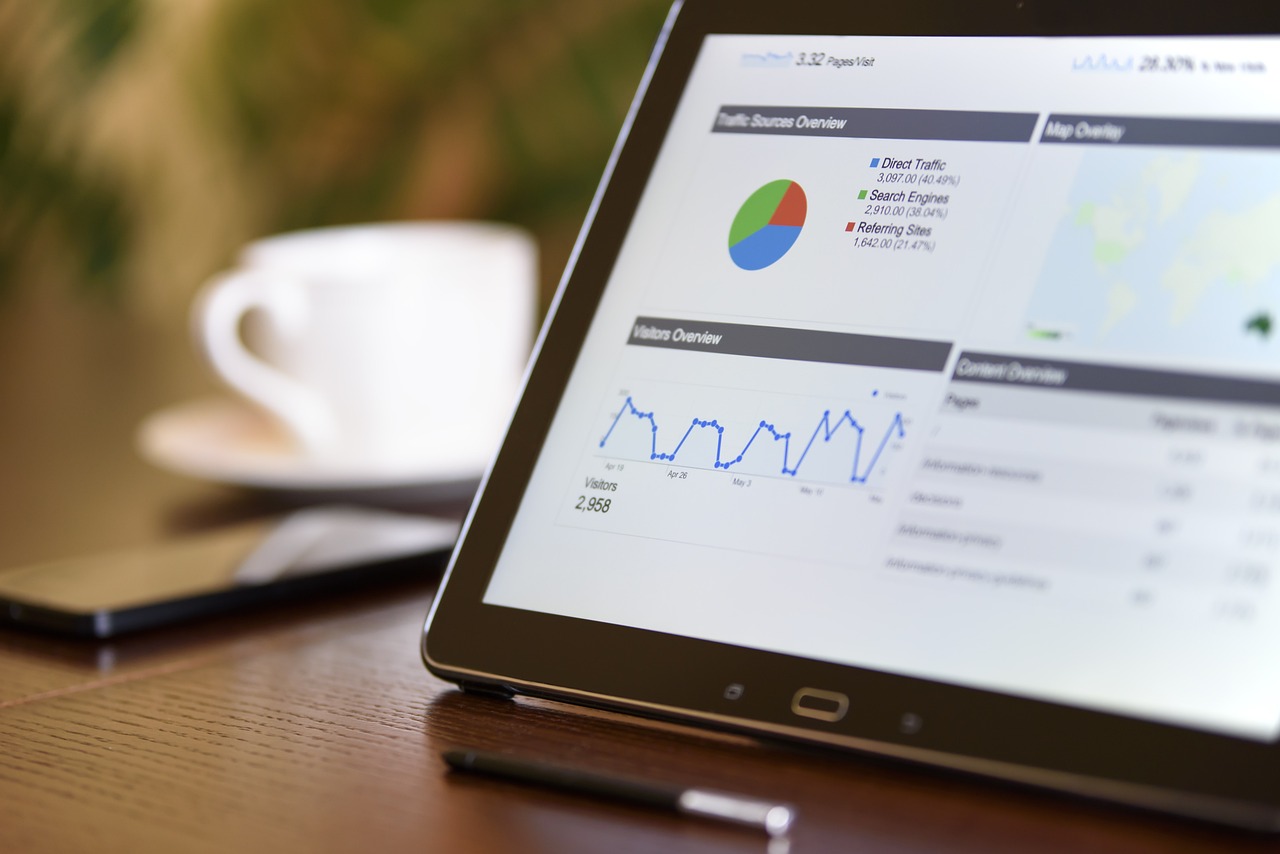In the ever-evolving world of digital marketing, understanding your audience is crucial for success. That’s where psychographics and targeting come into play. By delving into the deeper motivations, interests, and beliefs of your potential customers, you can create highly tailored and personalized marketing campaigns that resonate on a profound level. In this article, we will explore the power of psychographics and targeting in digital marketing, uncovering the secrets to connecting with your audience and driving meaningful results. So, buckle up and get ready to discover the keys to unlocking the true potential of your online presence.

Understanding Psychographics
Defining psychographics
Psychographics refer to the study and categorization of people based on their attitudes, values, interests, and beliefs. Unlike demographics, which focus on objective traits such as age, gender, and income, psychographics delve into the subjective aspects of an individual’s personality and lifestyle. By understanding psychographics, marketers gain insight into the motivations and preferences of their target audience, allowing them to create more targeted and effective marketing strategies.
Difference between psychographics and demographics
While demographics provide valuable information about a consumer’s basic characteristics, psychographics dive deeper into their mindset and behaviors. Demographics can tell you who your target audience is, but psychographics can tell you why they choose certain products or services. By understanding psychographics, marketers can create more personalized campaigns that resonate with their audience on a deeper level.
Why psychographics matter in digital marketing
In today’s digital age, understanding and leveraging psychographics is crucial for successful marketing campaigns. With the abundance of data available, marketers have the opportunity to segment their audience based on psychographic factors and tailor their messaging accordingly. This personalized approach leads to higher engagement, improved conversion rates, and ultimately, a stronger return on investment (ROI).
Psychographic Segmentation
Types of psychographic segmentation
Psychographic segmentation involves dividing a target audience into different groups based on their psychographic characteristics. There are several types of psychographic segmentation that can be utilized:
-
Personality Traits: This type of segmentation focuses on an individual’s characteristics and traits, such as introversion or extroversion, risk-aversion, or adventurousness.
-
Values and Beliefs: This segmentation considers an individual’s core values and beliefs, such as environmental consciousness, social justice, or personal growth.
-
Lifestyle: Lifestyle segmentation looks at an individual’s daily routines, activities, and interests. This can include factors such as hobbies, travel preferences, or health-consciousness.
Benefits of psychographic segmentation
Psychographic segmentation provides several benefits for digital marketers:
-
Improved targeting: By understanding the motivations and preferences of different psychographic segments, marketers can tailor their messaging to resonate with specific groups, leading to higher conversion rates.
-
Enhanced personalization: Personalization is key in today’s marketing landscape. Psychographic segmentation allows marketers to create personalized experiences and content for their target audience, strengthening brand loyalty and engagement.
-
Effective positioning: By closely studying psychographic segments, marketers can position their products or services in a way that aligns with their audience’s values and aspirations. This can differentiate them from competitors and create a unique value proposition.
How to conduct psychographic segmentation
To effectively conduct psychographic segmentation, marketers must gather data and analyze it. There are several methods and tools available to help with this process:
-
Surveys and questionnaires: Conducting surveys or questionnaires can provide valuable insights into an individual’s attitudes, interests, and behaviors. By asking targeted questions, marketers can collect data that can be used for psychographic segmentation.
-
Social media listening: Monitoring social media platforms allows marketers to gain an understanding of their audience’s preferences, interests, and behaviors. This data can be used to inform psychographic segmentation and targeting strategies.
-
Data analytics tools: Utilizing data analytics tools can provide marketers with in-depth insights into their audience’s behavior and preferences. These tools can help identify patterns and trends, enabling more effective psychographic segmentation.

Psychographic Targeting
Importance of psychographic targeting
Psychographic targeting is essential in digital marketing because it allows marketers to reach their audience on a more personal level. By understanding the values, interests, and motivations of their target audience, marketers can create highly relevant and engaging campaigns. This leads to better customer satisfaction, increased brand loyalty, and ultimately, higher ROI.
Methods of psychographic targeting
There are several methods that marketers can employ to implement psychographic targeting:
-
Behavioral targeting: Behavioral targeting uses data on an individual’s online behavior, such as browsing history or purchase patterns, to deliver personalized advertisements. By analyzing these behaviors, marketers can determine the psychographic characteristics of their audience and tailor their messaging accordingly.
-
Contextual targeting: Contextual targeting involves delivering advertisements based on the content of a webpage or the context of a user’s online experience. By displaying ads that align with a user’s interests and psychographic characteristics, marketers can increase the relevance and effectiveness of their campaigns.
-
Lookalike targeting: Lookalike targeting involves identifying individuals who exhibit similar psychographic traits to an existing customer base. By finding individuals with similar values, interests, and behaviors, marketers can expand their reach and target a broader audience.
Tools for psychographic targeting
To implement psychographic targeting effectively, marketers can utilize various tools and platforms:
-
Customer relationship management (CRM) software: CRM software helps marketers gather and organize customer data, allowing for more effective psychographic targeting. By analyzing customer interactions and behavior, marketers can tailor their messaging to specific segments.
-
Data management platforms (DMPs): DMPs collect and analyze data from multiple sources to create a unified view of the customer. By leveraging this data, marketers can target specific psychographic segments more accurately.
-
Programmatic advertising platforms: Programmatic advertising platforms use algorithms and data insights to deliver targeted ads in real-time. These platforms can utilize psychographic data to ensure that ads are shown to the most relevant audience.
Creating Persona Profiles
What is a persona profile
A persona profile is a fictional representation of a target customer or audience segment. It combines demographic and psychographic data to create a detailed profile that represents the characteristics, preferences, and needs of a specific segment. Persona profiles help marketers empathize with their target audience and create more effective marketing strategies.
Steps to create persona profiles
To create persona profiles, marketers can follow these steps:
-
Collect data: Gather both demographic and psychographic data about your target audience. This can include information such as age, gender, income, values, interests, and behaviors.
-
Identify patterns: Look for patterns and commonalities within your target audience data. Identify shared values, interests, and behaviors that can be used to group individuals into segments.
-
Create personas: Based on the patterns identified, develop fictional personas that represent each segment. Give each persona a name, demographic information, and a detailed description of their characteristics, preferences, and needs.
-
Refine and validate: Continuously refine and validate your personas based on new data and insights. Regularly update and adapt your personas to ensure their accuracy and relevancy.
Utilizing persona profiles for marketing campaigns
Persona profiles serve as a guide for marketing campaigns and strategies. They help marketers understand their target audience on a deeper level and tailor their messaging and content to meet their specific needs. With persona profiles, marketers can create more relevant and engaging content, resulting in higher customer satisfaction and increased conversion rates.

Using Psychographics in Digital Marketing
Content marketing based on psychographics
Psychographics play a crucial role in content marketing. By understanding the values, interests, and beliefs of their target audience, marketers can create content that resonates with them on a deeper level. This leads to higher engagement, increased brand loyalty, and more effective lead generation. For example, a fitness brand targeting health-conscious individuals may create content focused on nutrition tips, workout routines, and healthy recipes.
Personalized advertising using psychographics
Psychographics enable personalized advertising that speaks directly to the preferences and motivations of individuals. By segmenting their audience based on psychographic characteristics, marketers can deliver personalized advertisements that resonate with specific segments. For instance, a travel agency targeting adventure travelers may display ads featuring adrenaline-pumping activities and exotic destinations.
Social media targeting with psychographics
Social media platforms provide a wealth of psychographic data that marketers can leverage for targeted advertising. By utilizing social media targeting features, marketers can reach their desired audience based on their interests, behaviors, and demographics. This allows for highly effective and precise message delivery, increasing the chances of engagement and conversions.
Analyzing Psychographic Data
Collecting psychographic data
There are several methods for collecting psychographic data:
-
Surveys and questionnaires: Surveys and questionnaires provide direct insights into individuals’ attitudes, values, and behaviors. By asking targeted questions, marketers can gather psychographic data that informs their strategies.
-
Social media listening: Monitoring social media platforms allows marketers to collect data on their audience’s interests, conversations, and behaviors. This data can be analyzed to identify psychographic patterns and preferences.
-
Focus groups and interviews: Focus groups and interviews provide an opportunity for in-depth conversations and insights into an individual’s psychographic characteristics. These qualitative methods can provide rich data for analysis.
Analyzing and interpreting psychographic data
To analyze and interpret psychographic data effectively, marketers can follow these steps:
-
Data cleaning: Ensure that the collected data is accurate and free from errors. Remove any duplicates or irrelevant data.
-
Segmentation: Group the data into meaningful segments based on psychographic characteristics. Look for patterns and commonalities within each segment.
-
Data visualization: Use data visualization techniques such as charts, graphs, and infographics to present the findings in a clear and understandable format. Visualizing the data makes it easier to identify trends and insights.
-
Interpretation: Interpret the data by identifying key insights and trends. Look for correlations and relationships between psychographic characteristics and consumer behavior. Draw conclusions that can inform marketing strategies and decision-making.
Using data insights for marketing strategies
The insights gleaned from psychographic data analysis can be utilized to inform marketing strategies in several ways:
-
Message customization: Tailor marketing messages and content to align with the psychographic characteristics of specific segments. This personalization enhances engagement and resonates with the target audience.
-
Channel selection: Choose the most appropriate marketing channels based on the psychographic preferences of the target audience. For example, if the audience is highly active on Instagram, focus efforts on the platform.
-
Product development: Use psychographic insights to inform product development and innovation. Identify opportunities to create products or services that align with the target audience’s interests and needs.
Examples of Successful Psychographic Targeting
Case study 1: Targeting health-conscious consumers
A health food brand identified a psychographic segment of health-conscious consumers who value organic and sustainable products. By understanding this segment’s preferences and values, the brand created a marketing campaign highlighting the organic and sustainable aspects of their products. They utilized social media platforms to target the segment with personalized content and advertisements. As a result, the brand experienced increased engagement, higher sales, and improved brand loyalty within the health-conscious consumer segment.
Case study 2: Reaching adventure travelers
A travel agency specializing in adventure tourism wanted to target individuals with a passion for thrilling experiences. Through psychographic targeting, they identified a segment of adventure travelers who valued adrenaline-pumping activities and off-the-beaten-path destinations. The agency created personalized ads showcasing exciting adventure trips and utilized social media targeting to reach the segment. This resulted in a significant increase in inquiries and bookings from adventure travelers, leading to improved business growth.
Case study 3: Engaging eco-friendly shoppers
A sustainable fashion brand aimed to target eco-conscious shoppers who prioritize ethical and environmentally-friendly products. By leveraging psychographic targeting, the brand identified a segment of consumers who were passionate about sustainable fashion and valued transparency. They created a content marketing strategy centered around sustainable fashion tips, ethical production practices, and transparent supply chains. Through social media targeting, the brand reached the eco-friendly shopper segment, resulting in increased brand awareness, customer engagement, and sales.
Ethical Considerations in Psychographic Targeting
Respecting privacy and consent
Respecting privacy and obtaining consent are crucial when collecting and utilizing psychographic data. Marketers must ensure that individuals are aware of how their data will be used and have the option to opt out. Transparency and clear communication about data collection practices are key to maintaining ethical standards in psychographic targeting.
Avoiding discriminatory practices
Psychographic targeting should never be used to discriminate against individuals based on protected characteristics, such as race, religion, gender, or sexual orientation. Marketers must ensure that their targeting efforts are inclusive and do not perpetuate bias or discrimination.
Maintaining transparency in targeting efforts
Transparency is essential in psychographic targeting. Marketers should clearly communicate why and how they are targeting specific individuals based on their psychographic characteristics. This transparency builds trust and helps individuals understand and make informed decisions about their data and privacy.
Future Trends in Psychographic Targeting
Advancements in data collection technologies
Advancements in data collection technologies, such as artificial intelligence and machine learning, will continue to shape the future of psychographic targeting. These technologies will enable marketers to gather and analyze vast amounts of data more efficiently, leading to more accurate psychographic segmentation and targeting.
Better integration of artificial intelligence
Artificial intelligence will play an increasingly important role in psychographic targeting. AI algorithms can analyze large datasets and identify subtle patterns in consumer behavior, allowing for more precise targeting and personalization. AI-powered chatbots and virtual assistants will also enhance customer interactions and provide personalized recommendations based on psychographic insights.
Enhanced personalization through psychographics
As technology continues to evolve, marketers will have the capability to deliver hyper-personalized experiences based on psychographic data. By leveraging real-time data and automation, marketers can tailor messaging, content, and product recommendations to individuals, creating highly personalized experiences that drive engagement and conversion.
Conclusion
Psychographics and targeting in digital marketing are powerful tools for understanding and connecting with your audience on a deeper level. By leveraging psychographic segmentation and targeting techniques, marketers can create personalized and relevant campaigns that resonate with their audience, leading to increased engagement, improved conversions, and long-term brand loyalty. However, it is essential to approach psychographic targeting ethically, respecting privacy, avoiding discrimination, and maintaining transparency. As technology continues to advance, the future of psychographic targeting holds even more potential for enhanced personalization and improved marketing strategies.



